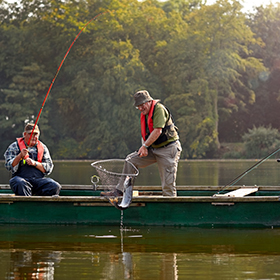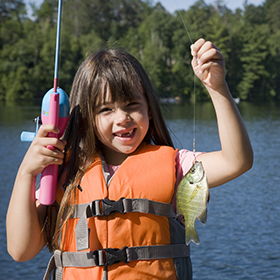Ever fished in an aqueduct? Here’s why California aqueduct fishing is worth a try.
An aqueduct is a man-made, canal-like water way. Managed by the California Department of Water Resources, at over 400 miles long and perhaps as deep as 30 feet in some areas, California aqueduct fishing is surprisingly productive.
Is it legal to fish in the California aqueduct?
Not only is it legal to fish in the California aqueduct, but there are 16 California aqueduct fishing locations designated on a map provided by the Department of Water Resources. Most of the California aqueduct fishing locations seem to be at bridges, but fishing directly off a bridge is not allowed for safety reasons. Once on the shore of the aqueduct, you may need to start hiking to find active fish so be sure to follow all signs and regulations, especially regarding safety. Currents can be swift so don’t wade or swim, wear rubber soled shoes, and locate yellow marked safety ropes and ladders.
What kind of fish are in the California aqueduct?
From my research, the presence of largemouth bass, carp, and California aqueduct catfish, was not surprising. However, this waterway is also known for good striped bass fishing. There isn’t much in the way of structure to hold fish so look for any irregularities such as bridge supports and bends, where current changes direction. Also, you are somewhat exposed on a concrete bank so long casts may be required to avoid spooking fish. I even read where anglers have trolled in a way while California aqueduct fishing, by walking lures attached to a planer board to reach fish. And as always, have an up-to-date fishing license and a copy of the fishing regulations because all rule apply to this unique fishing location.









